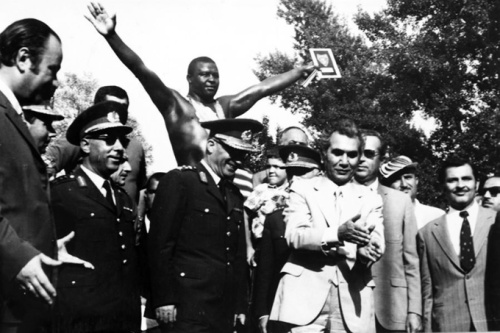
Somewhere around 1885, Zarafet absconded from enslavement and sought refuge in the British Embassy. While this was a regular occurrence in the late nineteenth century, particularly for other enslaved Africans like Zarafet, reading the police record of this event instigated a flood of questions: Who was Zarafet? From where and when did she arrive to Istanbul? What kinds of racialized, sexualized, gendered geographies of slavery did Zarafet evade, navigate, and otherwise encounter? While successful in gaining manumission documents, the lingering question of their future still haunts.
Zarafet’s haunting might also qualitatively encapsulate the tensions of researching into Black life under and in the wake of slavery—the fractured absences of Black life and the absented fractures of history.
In my dissertation, I ask how changing Ottoman elite conceptions of race, slavery, and blackness contributed to new forms of racialization of enslaved and manumitted Africans, how Africans experienced these emergent processes, and how they sought to create new kinds of community and ways of living. One of the main challenges this academic year has been to sit in those fractured absences of Black life within the archive and those absented fractures of history within our own narratives of the Ottoman Empire and Turkish Republic. In what ways can we imagine Black life in the region when, often, Africans are largely left aside in the historiography? This is one of many ancillary questions connected to my dissertation on Ottoman enslavement of Africans in the nineteenth century, but one that I’ve held closely throughout this fellowship. Over the course of the fellowship, I’ve encountered various documents which would help me unfold this question in various fields that even I’m surprised by. For instance, while many might have been familiar with Mustafa Yıldız, the first Turkish oil wrestler of African descent, some might be less familiar with Frederick Bruce Thomas, an African American who became an influential nightlife figure in Moscow and later brought jazz to the Ottoman Empire. Even fewer might be familiar with Afro-Turkish figures such as Dursune Şirin, possibly Turkey’s first Black actress, and her significant influence in bringing the Arap Bacı figure to life on the silver screen.
While I’m not sure which direction my research will take next, I am quite certain that Zarafet and the questions her brief narrative elicits will help us continue to address the larger, looming legacies of Ottoman enslavement on the African diaspora.

